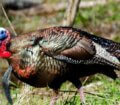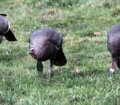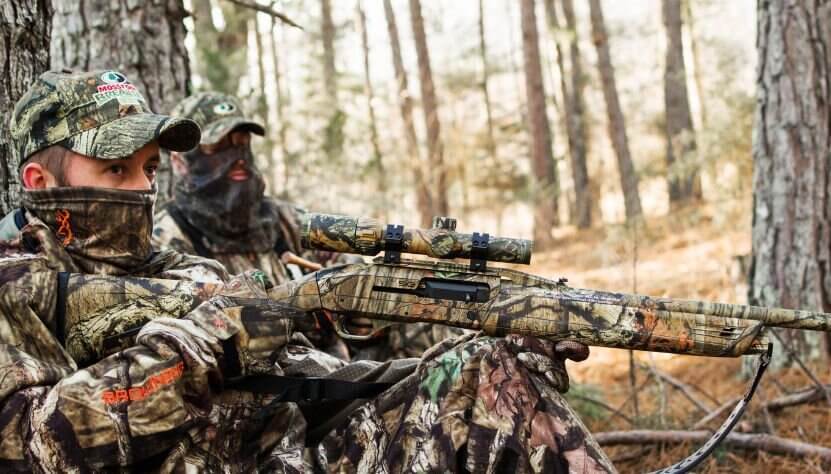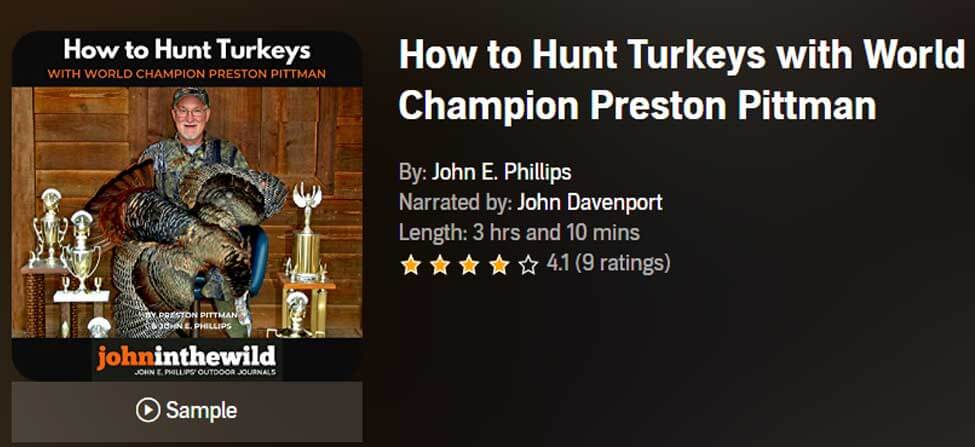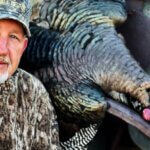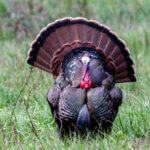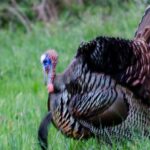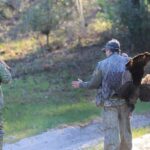Editor’s Note: A couple of weeks ago, I mentioned that from a Google survey, I’d learned what hunters wanted to know about hunting turkeys. Many of them never had turkey hunted before. Others had called longbeards but had specific turkey-hunting problems they didn’t know how to solve. First a hunter needs to understand that each gobbler he or she hunts is an individual bird with his own traits, hunter experiences and survival instincts. So, no one answer will answer all turkey hunters’ questions for each turkey-hunting situation. If you have turkey-hunting questions you need possible answers for, email John at [email protected], and he will try to help.
Question: What’s the best time of day to hunt a tough-to-take gobbler?
John E. Phillips: Whether he’s a tough-to-take gobbler or a gobbler you’ve never hunted before, the hours between 10:00 am – 2:00 pm are the most-productive times to hunt any turkey, especially if that gobbler has experienced hunting pressure. Most turkey hunters will hunt before first light until 9-10 am in the morning. Then, they’ll leave the woods to return to camp or their vehicles to eat lunch or visit their friends. They’ll not return to the woods until 2:00 pm, if afternoon hunting is legal in their state. The best time of day to hunt a tough gobbler is the last week of turkey season during that 10:00 am – 2:00 pm time period. Late in the season, most of the hens will have left to return to their nests after feeding in the mornings. The longbeards left without sweethearts will hope to meet-up with any hen that’s not in a nest.
Question: Where do you hunt a turkey on public lands after the season’s first two weeks?
Phillips: In my early days of turkey hunting, when I was hunting primarily on public lands, I thought that all gobblers on the public lands either had been killed or flushed-off. However, I later learned that the turkeys that experienced a lot of hunting pressure would move into thick cover to feed, nest and breed. They had learned there’s less danger in thick-cover areas than in the open woods. Most turkey hunters try to set-up in open woods where they can see from 50-100 yards. Very few, if any, turkey hunters will go into thick cover, call little, wait a lot and expect a gobbler to come in silently. That’s the technique that works best when you’re hunting public or leased lands.
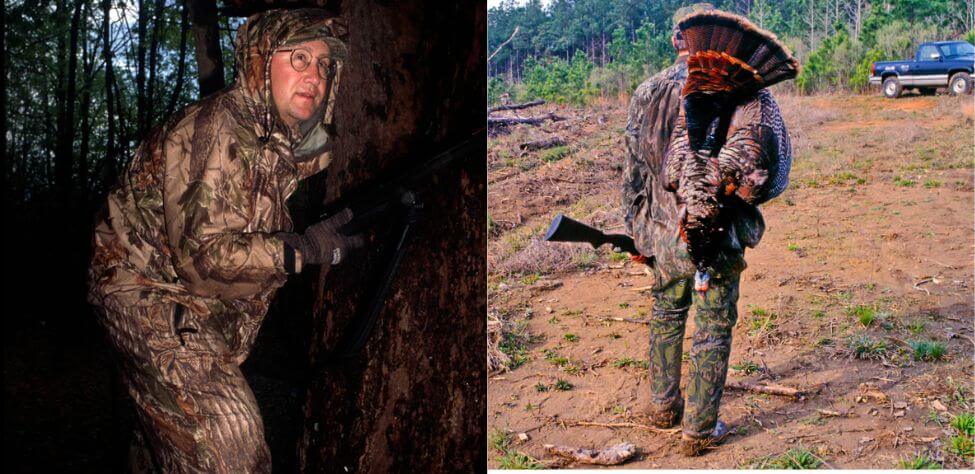
Question: How do I know when to move and when to stay when hunting turkeys?
Phillips: The answer to this question causes many turkey hunters not to kill their birds. Everything about our world today is moving quickly. However, we must remember that a gobbler takes a short stride, no more than 12 inches, even if he’s walking quickly. You also must not forget that we’re trying to make that turkey perform an unnatural act. When a gobbler hears a hen and gobbles back to her, he’s gobbling to let her know where he is. When we call to the turkey to make him come to us, he must perform an unnatural act.
Therefore, the turkey travels slowly and apprehensively. The turkey will start strutting and drumming, so the hen will come to him. If you don’t hear the turkey after 15-20 minutes, you can assume he’s found another group of hens. If I think I’ve waited long enough on a gobbler, I’ll look at my watch and decide to stay an extra 30 minutes. Then I may have the opportunity to bag a turkey that I will have spooked if I’ve moved earlier.
Question: Why do I miss turkeys?
Phillips: Once a hunter misses a turkey, often that’s because he’s moved his head off the stock of his gun to see the turkey better. When he does this, he will shoot over, under or to the side of a gobbler. Another reason many people miss turkeys while hunting is if there’s a bush or a tree in front of you, you will take your shotgun off your shoulder for a short time. Then you’ll miss the turkey in front of you. I love to use my rifle scope and shotgun to spot a turkey. I have taken more turkeys using that method rather than using the bead at the end of my shotgun as my sighting device.
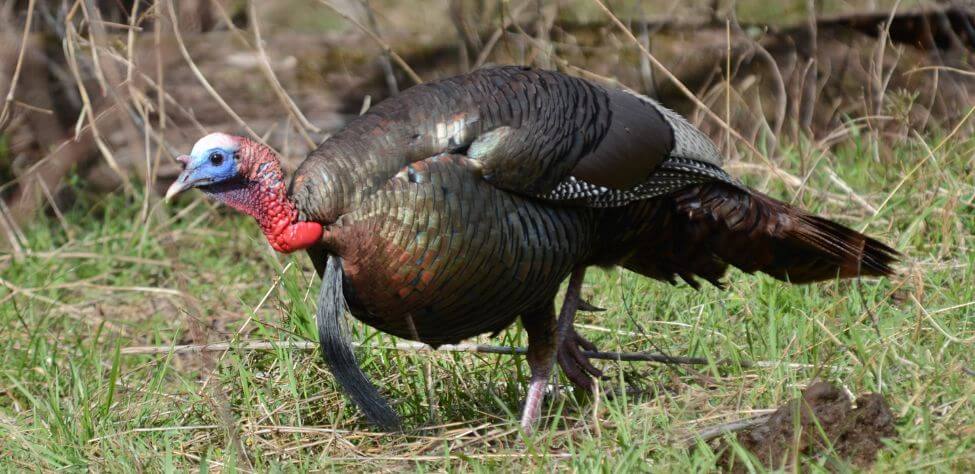
Question: How can I stop missing turkeys?
Phillips: If you’re hunting with a bead on the end of your shotgun or even an open sight that you can look through to see a bead at the end of your shotgun, say to yourself, “Can I see the end of the shotgun?” Having a turkey scope on my shotgun has solved this problem for me. If you’re ever hunting with another turkey hunter, who says he’s never missed a turkey in his life, then you know one of two things: he hasn’t been hunting very long; or he will lie about something else. If you hunt turkeys long enough, you will have an empty game bag some times.
Tomorrow: When You Make a Bad Turkey Call
Expert Guidebooks on Turkey Hunting: Best Sellers
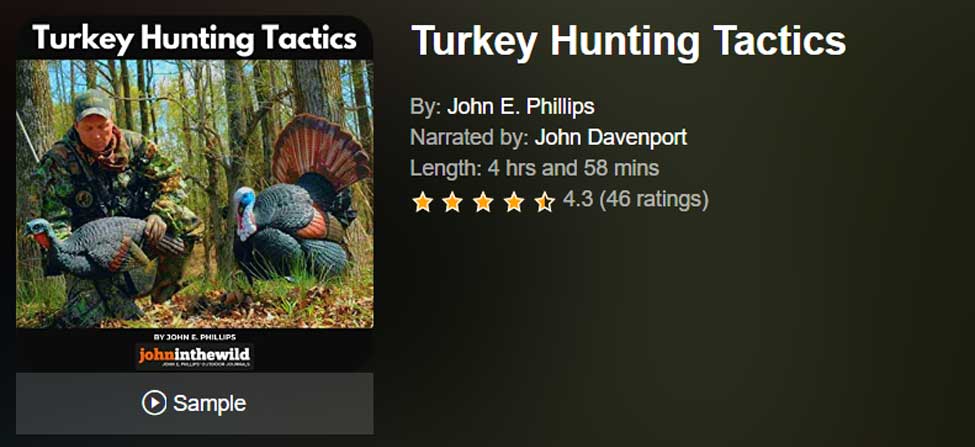
Turkey Hunting Tactics
This turkey hunting audiobook has entertaining chapters like: “How to Miss a Turkey”, “Hunting with a Guide”, and “The Turkey and the New York Lady”.
You’ll learn about all the subspecies of turkey across North America, how to use a turkey call, how to scout before turkey season, how to find a turkey to hunt, and what hunting gear you’ll need to put the odds in your favor to take a wily gobbler.
VERSIONS: AUDIBLE, KINDLE & PRINT
How to Hunt Turkeys with World Champion Preston Pittman
You easily can take a turkey if you don’t make any mistakes, but you have to know what the deadly sins of turkey hunting are to keep you from making those mistakes. If you understand how to hunt a turkey, you’re far more likely to take a gobbler than if you just know how to call a turkey.
Of course, calling is important, and if you want to learn to call a turkey, Preston Pittman will teach you how to call turkeys with box calls, friction calls, diaphragm calls, and other turkey sounds.
You’ll also learn why Preston Pittman once put turkey manure all over his body to kill a tough tom.
When you have turkeys that strut and drum in the middle of a field, when you know there’s no way to get close enough to get a shot, Pittman will show you some weird tactics that have worked for him to help you hunt tough ole toms.
But the main thing you’ll learn in this book is how to become the turkey.
Using what he’s learned while hunting wild turkeys, he’s also become a master woodsman who can take most game, regardless of where he hunts. To learn more secrets about how to be a turkey hunter from one of the world champions of the sport, this turkey-hunting book with Preston Pittman is a must.
VERSIONS: AUDIBLE, KINDLE & PRINT
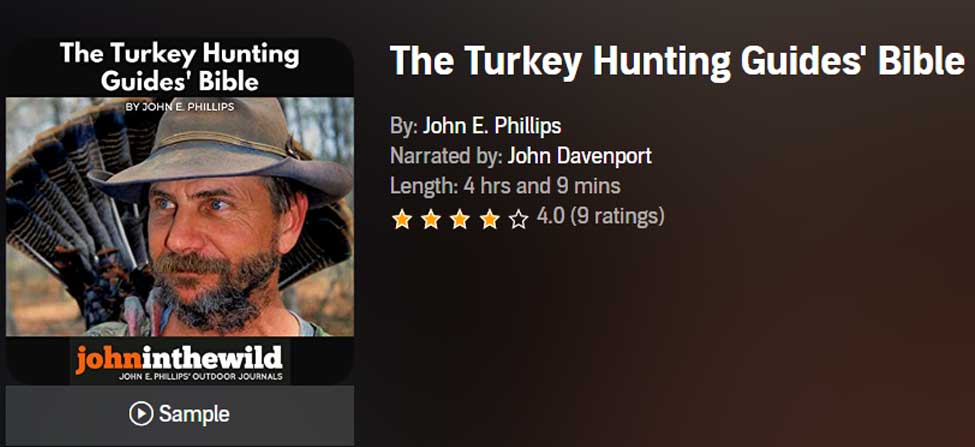
The Turkey Hunting Guides’ Bible
The quickest way to learn how to turkey hunt successfully is to either hunt with a turkey hunter with years of experience or a turkey-hunting guide. These two types of turkey hunters have solved most of the problems turkey hunters ever will face.
Just as one size of shoes won’t fit every person, one style of turkey hunting doesn’t fit each hunter. Each turkey-hunting guide interviewed for this book has his own style of calling, hunting, and outsmarting turkeys.
While listening to this book, make a list of the new information you’ve learned, take that list with you during turkey season, and try some of the new tactics. Then you’ll become a more versatile turkey hunter and prove the wisdom from The Turkey Hunting Guides’ Bible.
VERSIONS: AUDIBLE, KINDLE & PRINT
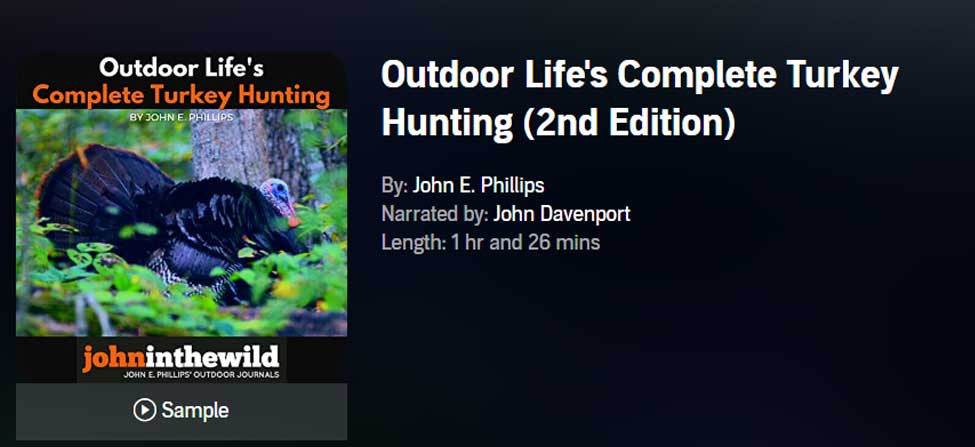
Outdoor Life’s Complete Turkey Hunting (2nd Edition)
This Audible book will help you learn how to call turkeys with two of the nation’s best, longtime and well-known turkey callers, Rob Keck, formerly with the National Wild Turkey Federation, and Lovett Williams, a wildlife biologist who recorded wild turkeys giving the calls that you’ll learn how to make on various types of turkey callers.
VERSIONS: AUDIBLE & KINDLE

